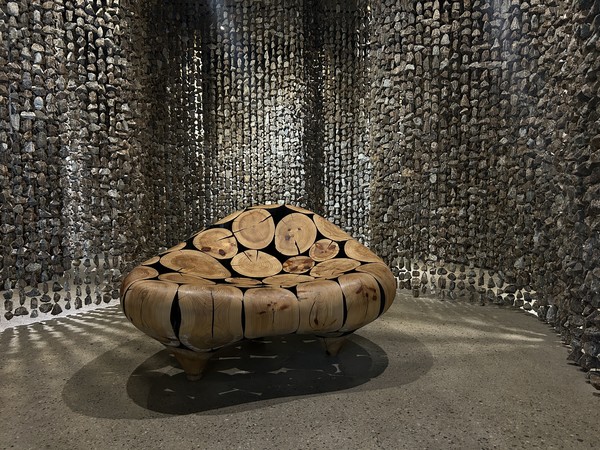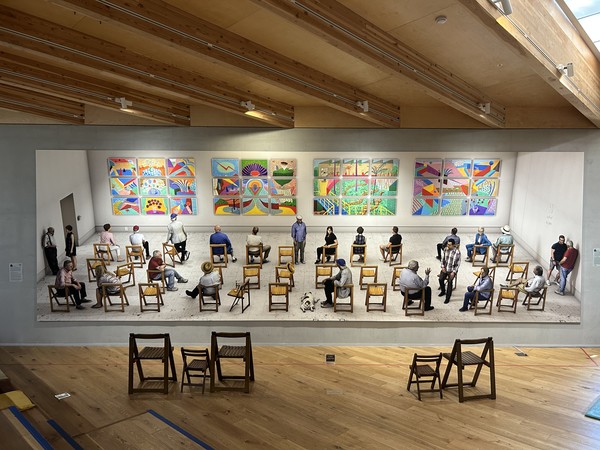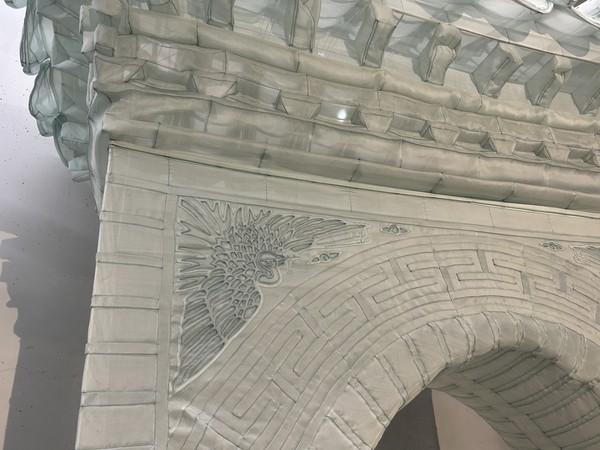Time for rest and recreation away from studies
AFTER A strenuous week of midterm exams, everyone deserves a day off to divert their eyes from textbooks and computer screens. I dare say the beautiful blend of art and nature in Yangpyeong-gun is the perfect remedy for exhausted students. With my sister in the driver’s seat and me in the passenger’s, we made the hour-long journey to the county in Gyeonggi-do, where we visited Lee Jaehyo Gallery and Koo House Museum and enjoyed a lunchtime interlude at To-dam-gol.


Reconnecting with nature
Time flew as my sister and I rode in the car, singing along to our favorite songs until the navigation system informed us that we had arrived at Lee Jaehyo Gallery. Lee Jae-hyo, a renowned sculptor and owner of the gallery, uses rocks, twigs, and leaves—anything he finds in nature—to create his artworks. The recipient of prizes such as the Excellence Award at the 2008 Beijing Olympics Landscape Sculpture Contest, Lee has hosted over 20 solo and 40 group exhibitions, and his works adorn museums and hotels around the world.
The gallery operates daily from 10:00-18:00[1] and sells tickets at the gallery cafe. Tickets cost ₩15,000 per adult including a beverage of choice or ₩10,000 without a drink. Guests may opt to enjoy a cup of coffee and shop for souvenirs before or after visiting the exhibition halls.
Entering the first exhibition hall, my eyes struggled to adjust to the dim lighting. I could smell an unfamiliar yet comforting scent, and quickly noticed it was that of earthy rocks. Curtains of stone bound with wire were suspended from the ceiling like persimmons hung in threads to dry in winter. The looped stones created a narrow pathway leading to an open hall. There, three wood sculptures stood, boasting Lee’s distinctive, biomorphic style[2]. In the second exhibition hall, again, autumn leaves hung like curtains and guided the path to the next display. Surrounded by the dusty, brown colors of leaves, twigs, and logs, it felt as though Lee had captured the essence of fall in a single room. I could not distinguish whether I was in awe of Lee or nature. To this, he says that all you have to see is the beauty of the tree itself[1].
In the third exhibition hall of Lee Jaehyo Gallery, large-scale pieces demonstrated grandeur, instantly seizing my gaze. To the right, I was introduced to a new material—steel. Lee uniquely utilizes steel nails in his creative work by bending and flattening them to craft abstract shapes on black canvases. He also uses the nails to sign his name at the bottom of the art piece, the signature hardly noticeable as it flawlessly blends in with the rest of the work. Mesmerized by his talent, I proceeded to the fourth exhibition hall and discovered a more playful side of the artist. The room had a collection of his more casual works, such as a tortoise sculpture made from a helmet. Lastly, the fifth and final exhibition hall was a peek into the mind of a genius. Little drawings and doodles were framed on all 4 sides of the room, and it was fascinating to witness how his great artworks, which filled the past 4 rooms, began with these visionary sketches.


A little lunch break
After a revitalizing experience at Lee Jaehyo Gallery, my sister and I grew hungry. We drove to a nearby restaurant, To-dam-gol, which offered Korean stone pot meals. I was excited to see the variety of options available, from fish such as gal chi jo rim[3] and grilled eel to meat such as dak-gal-bi[4]. The main dishes were paired with steamed stone pot rice, cheong-guk-jang[5], and ban-chan[6]. Prices of these meals ranged from ₩18,000 to ₩42,000, depending on the main dish. In addition to the food, I chose to dine at To-dam-gol for the stunning view. Yangpyeong is known for its tranquil scene of the Bukhan River, and this restaurant has a terrace surrounded by the river and mountains. Seated outdoors, I could feel the breezy wind and hear the flowing water, which complemented the fresh, natural taste of the meal. It was the perfect spot to re-energize physically and mentally.


Immersion in art
The subsequent walk to Koo House Museum took just ten minutes. From afar, I could see the exterior of the museum; jutted bricks covered the façade of the building, mixing flat and rough surfaces. Cho Min-suk, the architect of Koo House Museum, incorporated obtuse, acute, and right-angled corners to create textural diversity and contrast. The dramatic structure of the museum embraces spaces wide and narrow, high and low, light and dark[7]. The building itself was the first artwork I encountered at this museum.
The museum opens from 13:00-17:00 on Wednesdays to Fridays, and 10:30-17:00 or 18:00 on weekends. Passing by the counter, where I paid an admission fee of ₩15,000, I noticed a white interior decorated with vibrant artwork. The museum exhibits a private collection of Koo Jung-soon, Korea's first-generation graphic designer. She chose the name “Koo House” as she wanted it to be a warm environment for guests. In line with the theme, each of the indoor spaces is named after an area in a house, for instance, the living room, library, and corridor[8]. Each room displays a variety of contemporary art and design works such as paintings, sculptures, photographs, and furniture by numerous artists.
As someone unknowledgeable about art, I was overwhelmed by the multiplicity of artworks. Still, one installation stood out. It was a structure of a traditional Korean-style gateway, made from translucent, silk cloth and stainless-steel tubes. The label read Gate-Small, by Suh Do-ho, and explained that Suh investigates the notion of home and space, inspired by “his experience of relocating from Korea to the United States in his late twenties[7].” The experience of learning about new Korean artists was both intriguing and enlightening.
* * *
Returning to Seoul, the stress accumulated in my body was no longer existent; Yangpyeong-gun proved to be an impeccable destination to regain energy and motivation. Between midterms in October and finals in December, November is the perfect time for rest and recreation. I suggest students visit Lee Jaehyo Gallery and Koo House Museum to feast their eyes and dine at To-dam-gol to please their tastebuds.
[1] Lee Jaehyo Gallery
[2] Biomorphic: Biomorphic forms refer to abstract shapes that evoke naturally occurring images such as plants, organisms, and body parts.
[3] Gal chi jo rim: Korean braised cutlassfish
[4] Dak-gal-bi: Korean spicy grilled chicken
[5] Cheong-guk-jang: Korean stew made with fermented beans
[6] Ban-chan: Korean home-made side dishes
[7] Koo House Museum
[8] Design

